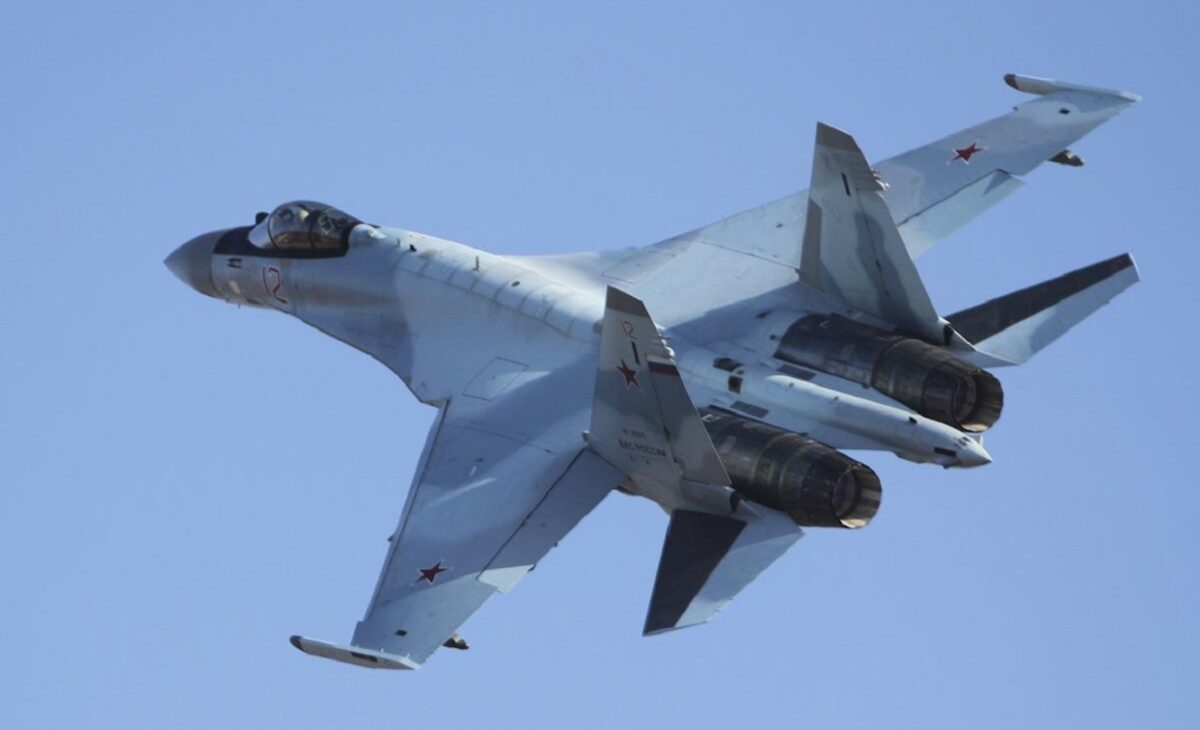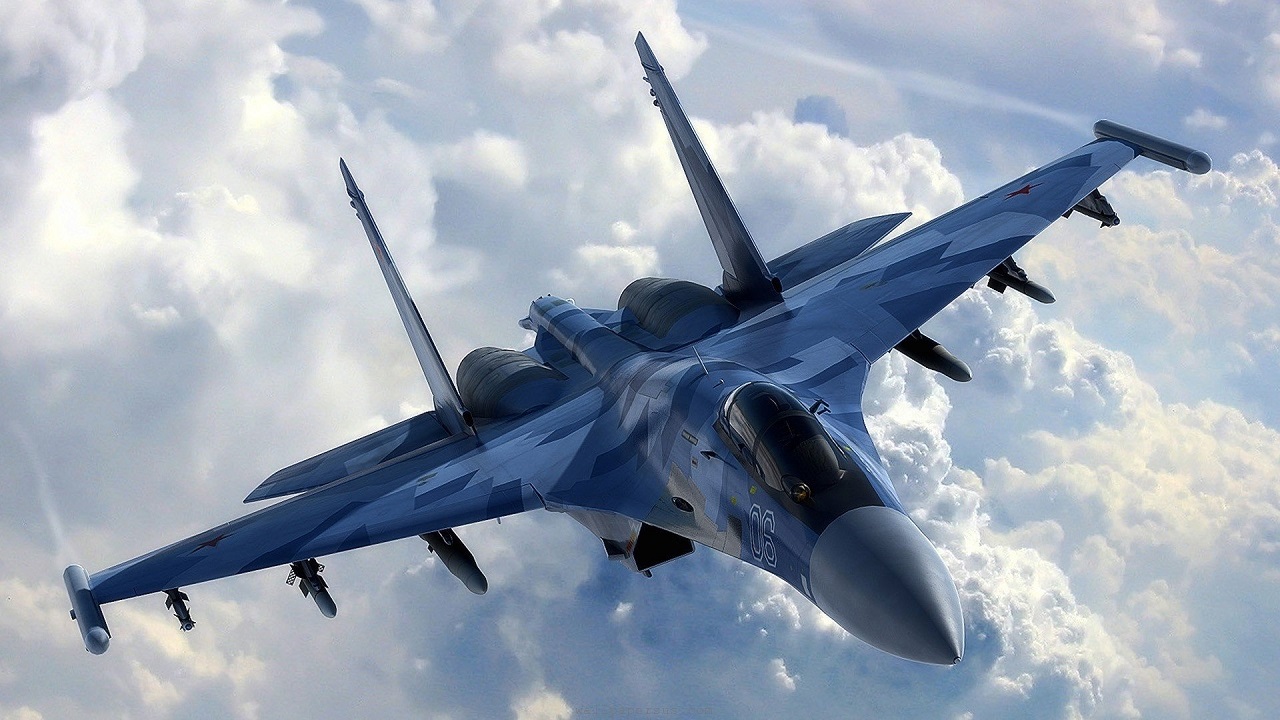Before the war in Ukraine, the Su-35 was seen as one of Russia’s best fighters – maybe the best Moscow has, considering the troubles with the Su-57. An answer to the American F-15 Eagle and F/A-18 Hornet, it is a fourth-generation plus plus warplane with some fifth-generation characteristics.
But the Su-35 has not lived up to its reputation. At least 24, perhaps two squadrons, have been lost over Ukraine, according to an August Facebook post by a Ukrainian general from the General Staff of the Armed Forces of Ukraine. The Su-35 Flanker E cost around $85 million each.
Su-35 Is Having Difficulty
The twenty-four number is not independently verified, but we do know that at least two Su-35s were shot down over Ukraine in April and May while dogfighting and when going up unsuccessfully against Ukrainian air defenses. Whatever the actual number of airplanes that have crashed and burned, the Su-35 Flanker-E’s performance is a slap in the face to the Russian air force. Prior to Russia’s invasion of Ukraine, the Su-35 was believed to have air superiority over Ukrainian fighters easily.
Better Engines Should Make It a Dogfighting Ace
The Su-35 is a single-seat, twin-engine highly-maneuverable fighter that can fly 1,500 miles per hour with a range of 2,200 miles and a ceiling of 59,000 feet. The Su-35 is also known for its highly capable thrust vectoring NPO Saturn 117S engines that have given the airplane 16 percent more thrust over the previous AL-31F engines.
Pre-war Hype from Manufacturer
The Flanker-E is an improved version of the Su-27M. The Su-35 does not have the Su-27M canards. The United Aircraft Corporation, the Russian defense conglomerate that makes the Su-35, says it has a “modern multi-channel electronic warfare system, reduced radar signature, and high combat survivability.”
Not Winning Enough Confrontations
But the Flanker-E has shown a low level of survivability over Ukraine. It is not stealthy and has a high radar cross-section. It does include an Irbis-E radar. This system can track four ground targets or up to 30 airborne targets simultaneously, but the targeting range is low. Avionics have been improved. All electronics are now comprised of a single system, although Aviation Geek Club has called this a less-than-capable avionics suite. The cockpit should be amenable to pilots. There are two large color LCDs. Plus, a wide-angle heads-up display.
Weapons Are Not the Problem
The Su-35 has 17,630 pounds of weapons payload on 12 external points. It can carry a robust suite of air-to-air, air-to-surface, anti-radiation, and anti-ship missiles. It drops TV, laser, and satellite-guided bombs.
Difficult to Maintain
A downside of the Su-35 is its high maintenance needs. As Military Watch Magazine describes it, these shortcomings affect combat performance. “High maintenance and operational costs also have implications in wartime, since fighters will be able to generate less sorties over a longer period and be more vulnerable to enemy interdiction efforts targeting supplies of fuel and spare parts,” the magazine said.

Image: Creative Commons.
Russia has endured these problems since the start of the war and had months to fix various issues of maintenance, mechanics, tactics, and procedures. The pilots may have experienced difficulty early on, but they also had the time to adjust. Russia has not claimed air superiority since invading and the Su-35 has paid the price for this state of affairs. It is one of the best, if not the best, fighter in the Russian inventory, so its performance has been an embarrassment. If Russia has lost even a handful of Su-35s and not the two dozen that Ukraine claims, it still needs to improve its performance if Russia is to win the air war.
Expert Biography: Serving as 1945’s Defense and National Security Editor, Dr. Brent M. Eastwood is the author of Humans, Machines, and Data: Future Trends in Warfare. He is an Emerging Threats expert and former U.S. Army Infantry officer. You can follow him on Twitter @BMEastwood. He holds a Ph.D. in Political Science and Foreign Policy/ International Relations.

